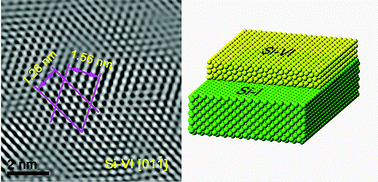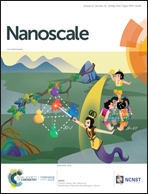Deformation induced new pathways in silicon†
Abstract
No in situ nanomechanical tests on damaged brittle materials have been demonstrated. This means that the transition route in damaged silicon (Si) under deformation is elusive. A gap is formed between abrasive machining and present nanomechanical tests, due to the unmatched nanostructure produced. In this study, a Si wedge is fabricated with a plateau of 80 nm in thickness. In situ dynamic nanoindentation is performed in a transmission electron microscope (TEM) on the damaged Si wedge, using a developed cube corner indenter with a tip radius of 66 nm. Nanotwins, slip bands and intersected stacking faults are observed in Si, which bridge the gap between abrasive machining and nanomechanical tests. A transition from Si-I to Si-VI is demonstrated by in situ atomic characterization, which is a new pathway in Si induced by in situ TEM nanoindentation. Ab initio calculations are conducted to elucidate the transition mechanism from Si-I to Si-VI. In the transition, the average potential energy is increased by 1.21 eV, and the average force exerted on an atom is 2.444 nN through compression and rotation. The findings propose new insights into the fabrication of high-performance devices and nanostructures in the electronics industry.



 Please wait while we load your content...
Please wait while we load your content...